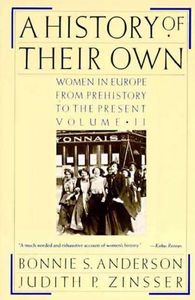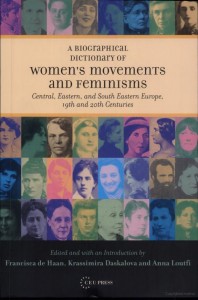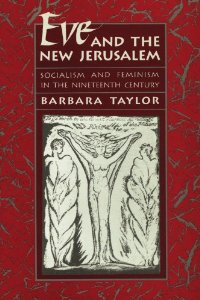By Jackie Cavedon
Feminism: n, adj. The theory of the political, economic, and social equality of the sexes. Organized activity on behalf of women’s rights and interests.—Merriam Webster Dictionary
Introduction
Feminist ideas were abound across Europe in the nineteenth century. Activists like Mary Wollstonecraft and Anna Wheeler fought for women’s rights in all aspects of society whether political, social, cultural, or economic. I found that the major leaders who kept appearing in my research were from bigger, more industrialized countries like England and France, perhaps because they did not have such oppressive governments as other lesser countries. The promotion of equality in marriage, parenting as well as attaining property rights for these women were of particular concern in the beginning of the century. By the end, however, focus shifted to two different sectors. Some feminists focused primarily on gaining political power through women’s suffrage while others were active in campaigning for women’s sexual and reproductive rights. Although feminism had obviously been around before the nineteenth century, it is during this time period when the movement truly caught on and made progress. Ultimately, at the close of the century, women had tried more than ever to advance the feminist movement even if it meant they would be executed. This lead to a throng of new supporters dedicated to the movement going into the twentieth century.
My sources are a combination of academic articles, websites, dissertations and books. Feminist historiography is mostly written by established professionals in books more so than the other sources. I begin my annotated bibliography with an overview of online and offline sources in European feminist history in the nineteenth century. I then move to explain the major leaders of the movement during this time period and their works providing arguments towards equality for men and women. Because philosophic ideas were quite similar to that of feminists’, I conclude with a list of philosophes who can also be considered feminists although they may not have labeled themselves as such.
Background Sources (Text)
- Anderson, Bonnie S., and Judith P. Zinsser. A History of Their Own: Women in Europe from Prehistory to the Present. Oxford University Press: New York, 1999.
This two-volume book covers the time period between when the first documented record of women campaigning for rights in the early 18th century to the present. It focuses on the developments, achievements and changes in women’s societal roles. The authors also describe woman’s low position in society and what they did to progress that position through several waves of feminism. The book starts with a description of treatment and attitudes towards women in earliest recorded history and ends with a detailed account of how far the feminist movement had come in 1999 when the book was published.
- Allen, Anne Taylor. Feminism and Motherhood in Western Europe, 1890-1970: The Maternal Dilemma. New York: Palgrave Macmillan, 2005.
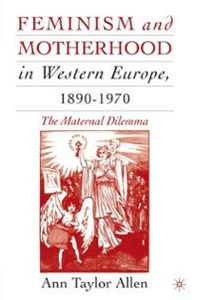
Allen’s book details the problems feminist mothers face in the late 19th and 20th centuries. Again, it was only a section of the book that was helpful in researching nineteenth century European feminism. The first four chapters did, however, give insight on the role of mothers in the nineteenth century and the troubles they face in politics, marriage, and home life. Allen demonstrates how a mother’s role in the home interfered with her ability to participate in movements. Often, husbands did not want their wives participating in movements because men believed the woman’s job was to stay home to tend to their children, cook and clean.
- De Haan, Francisca, Krasimira Daskalova, and Anna Loutfi.Biographical Dictionary of Women’s Movements and Feminisms in Central, Eastern and South Eastern Europe. Budapest: Central European University Press, 2006.
- This 600-page work consists of 150 researched biographical accounts of those involved in feminist movements in countries throughout Europe in the 19th and 20th centuries. Of course, only approximately half of the book was relevant to my topic, but it does give considerable insight on how diverse the feminist population was. The book covers the works of teachers, philosophers, peasants, novelists, scientists and political activists among others. Of the biographies detailed were Molly Wollstonecraft and John Stuart Mills both of whom I will be later profiling in the “Leaders of the 19th Century Feminist Movement” section of this annotated bibliography.
- Moses, Claire Goldberg. French Feminism in the Nineteenth Century. Albany: State University of New York Press, 1984.
 Clearly, Moses’ book focuses on French feminism of the time period. She expands upon the roots of French feminism, mainly from Saint Simonian ideas. Because Moses focuses on such a specific area of Europe, she is able to talk more indepth about specifics of that area such as the bourgeois woman’s feminist experience and French feminist literature. She mostly focuses, however, on politics which women were mainly involved in the French feminist movement like Olympe de Gouges and Maria Deraismes, who both lead feminists at different times in the nineteenth century.
Clearly, Moses’ book focuses on French feminism of the time period. She expands upon the roots of French feminism, mainly from Saint Simonian ideas. Because Moses focuses on such a specific area of Europe, she is able to talk more indepth about specifics of that area such as the bourgeois woman’s feminist experience and French feminist literature. She mostly focuses, however, on politics which women were mainly involved in the French feminist movement like Olympe de Gouges and Maria Deraismes, who both lead feminists at different times in the nineteenth century.
- Paletschek, Sylvia, and Bianka Pietrow-Ennker. Women’s Emancipation Movements in the Nineteenth Century: A European Perspective. Stanford: Stanford University Press, 2004.
Paletschek and Pietrow-Enneker put together a collection of essays that shed light on common problems for nineteenth century feminists in cultural, political and socioeconomic spheres in Europe. The essays explain how women in major western European countries like Britain, France and Germany progressed their feminist movements at different paces and in different ways. This book is different from others on feminist movements because it does not just focus on these major countries but focuses on a broader context of the movement including smaller scale countries like Hungary.
- Robertson, Priscilla Smith. An Experience of Women: Pattern and Change in Nineteenth Century Europe. Philadelphia: Temple University Press, 1982.
Like the other books in this section, Robertson’s novel gives a detailed description of women’s every day life in nineteenth century Europe. It is a lesser known book because of its age, but still includes important information on nineteenth century feminism. Robertson describes a time of political unrest for women trying to fight for their right to vote while maintaining their households and raising their children. Robertson explains the patterns between women across Europe, such as how their feminist ideas pierced through the political and cultural agenda of society and made way for women’s rights.
- Taylor, Barbara. Eve and the New Jerusalem: Socialism and Feminism in the Nineteenth Century. New York: Pantheon Books, 1983.
Although readers would not know from the title, Taylor’s book is actually on socialism and feminism in England, not Europe as a whole. Despite this, Taylor does a good job of covering all the topics pertaining to feminist England. She describes events using newspaper articles and quotes from prominent feminists of the time. Taylor focuses on people more so than events and the movement itself, however. She often introduces a significant person, like Mary Wollstonecraft or Anna Wheeler, and explains their roll in certain English feminist movements. Taylor weaves information on socialist feminism in throughout the novel by explaining why socialism and feminism were so closely linked.
Background Sources (Online)
http://www.jstor.org.ezproxy.bu.edu/stable/pdfplus/3518956.pdf?acceptTC=true
- This article by UCLA history professor Ellen Dubois further explains the women’s suffrage movement of the nineteenth century. Dubois explains the radicalist nature of the suffrage movement that was needed in order for others to take notice of the movement and not push it aside.
http://europetransformed.blogspot.com/2007/02/feminism-socialism-anarchism.html
- By Dr. Anne Scott for her class Europe 1700-1914: A Continent Transformed” at Birkback University of London. As one can see by Scott’s article, she is clearly knowledgeable on feminism. With the help of Michael Rapport’s Nineteenth-Century Europe and John Belchem and Richard Price’s A Dictionary of Nineteenth-Century History, Scott goes into detail with socialism and anarchism and their relation to feminism. This goes hand in hand with Barbara Taylor’s Eve and the New Jerusalem, which I previously mentioned in the text portion of my background sources.
http://pers-www.wlv.ac.uk/~le1810/1stwave.htm
- Professor Penny Welch created this culmination of feminist information for her class Women in Europe at the University of Wolverhampton in England. It outlines the waves of feminism and includes several lists of bibliographies for different European countries so students can research more on feminism in a certain area. The outline for her course includes pertinent information for nineteenth century European feminism.
Leaders of the 19th Century Feminist Movement
Mary Wollstonecraft. Wollstonecraft was one of the most prominent feminists in the late eighteenth century into the early nineteenth century. She fought for change on all feminist fronts: political, social and cultural. Below is a list of some of her works as well as background sources that include more information about what she did as a feminist to improve women’s lives.
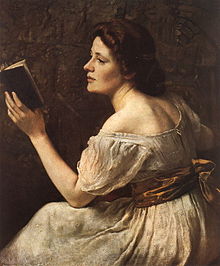
Mary Wollstonecraft
- Gordon, Lyndall. Vindication: A Life of Mary Wollstonecraft. Harper Perennial, 2006.
- Wollstonecraft, Molly. “Wollstonecraft’s Philosophical Impact on Nineteenth-Century American Women’s Rights Advocates.” American Journal of Political Science. no. 4 (2004): 707-22.
- Wollstonecraft, Molly. A Vindication of the Rights of Women. Boston: Peter Edes, 1792.
John Stuart Mill. As a British philosopher and public servant, Mill advocated for equality primarily through his work The Subjection of Women. I have included below a background source on men in the feminist movement, entitled Feminism and Masculinities, Mill’s essay, and a semi-recent response to it from a modern viewpoint.
- Mann, Hollie, and Jeff Spinner-halev. “John Stuart Mill’s Feminism: On Progress, the State, and the Path to Justice.” Nature Publishing Group. no. 2 (2009).
- Mill, John Stuart. The Subjection of Women. London: Longman’s, 1870.
- Murphy, Peter F. Feminism and Masculinities. New York: Oxford University Press, 2004.
- Pyle, Andrew. The Subjection of Women: Contemporary Responses to John Stuart Mill. London: Thoemmes Press, 1995.
Charles Fourier. Fourier was one of the most radical minds of the nineteenth century. He was said to have coined the term “feminism” in the mid-century; a term popularized by women of the time period. His work The Theory of the Four Movements explains the roots utopian socialism including the feminist ideas that go along with it. These utopian themes are further analyzed in Leslie F. Goldstein’s article “Early Feminist Themes in French Utopian Socialism: The St.-Simonians and Fourier.” Professor Jonathan Beecher authored a biography on Fourier, and selected parts of that text can be found below.
- Beecher, Jonathan. Bloomsbury Academic, “Bloomsbury Publishing.” Last modified 1986. Accessed April 29, 2013. http://www.bloomsburyacademic.com/view/Utopian-Moments/chapter-ba-9781849666848-chapter-016.xml.
- Fourier, Charles. The Theory of the Four Movements. Great Britain: Cambridge University Press, 1996.
- Goldstein, Leslie F. “Early Feminist Themes in French Utopian Socialism: The St.-Simonians and Fourier.” Journal of the History of Ideas. no. 1 (1982): 91-108.
Josephine Butler. As a feminist, Butler was primarily concerned about the welfare of prostitutes. She is widely known as an incredibly Christian feminist, once stating, “God and one woman make a majority.” Her article “The Women’s Place in Work” detailed what she believed should be a woman’s true job, and that is to serve God in any way possible. I also found a helpful dissertation written (in English) by a Spanish graduate student on Butler’s beliefs on religion and government.
- Butler, Josephine. “The Women’s Place in Work.” The Christian Literature Co. (1892): 31-7.
- Mdegish, Ainour Fathi. Josephine Butler: Women’s Rights Between Religion and Military. master\., Repositório da Universidade de Lisboa, 2010. RCAAP.
- Wanrooij, Bruno P.F. “Josephine Butler and Regulated Prostitution in Italy.” Women’s History Review. no. 2 (2008): 153-171.
Feminism and Philosophy
Several prominent French philosophes could also be considered feminists because their ideas of equality and universal suffrage overlapped with the same ideas feminists had. Below is a list of convincing academic articles that explain further why major philosophes of the eighteenth century and beyond were also sometimes feminists, and how their ideas influenced the feminists after them. It is important to note that between the eighteenth and nineteenth centuries, the ideas of equality and fairness for all did not change, just the philosophes themselves. Accordingly, several of the articles may be on eighteenth century philosophes, but do touch on how they impacted nineteenth century feminism.
- Clinton, Katherine B. “Femme et Philosophe: Enlightenment Origins of Feminism.” Eighteenth-Century Studies. no. 3 (1975): 283-299. http://www.jstor.org.ezproxy.bu.edu/stable/2737750 (accessed April 29, 2013).
- Groenhout, Ruth F. Philosophy, Feminism and Faith. Bloomington: Indiana University Press, 2002.
- Sepinwall, Alyssa Goldstein. “Robespierre, Old Regime Feminist? Gender, the Late Eighteenth Century, and the French Revolution Revisited.” The Journal of Modern History. no. 1 (2010): 1-29. http://www.jstor.org/stable/10.1086/650505 (accessed April 29, 2013).
- Nye, Andrea. Feminism and Modern Philosophy. New York: Prentice Hall International, 1995.
“I do not wish them [women] to have power over men; but over themselves” –Molly Wollstonecraft, A Vindication of the Rights of Women
Pictures cited in order of appearance:
- http://www.citelighter.com/political-science/womens-studies/knowledgecards/1st-wave-feminism
- http://ecx.images-amazon.com/images/I/51J0%2B07sHlL._SY320_.jpg
- http://jacketupload.macmillanusa.com/jackets/high_res/jpgs/9780230602328.jpg
- http://www.ceupress.com/books/pictures/Women’smovements.jpg
- http://ecx.images-amazon.com/images/I/51EVKRTXAQL._SY300_.jpg
- http://i43.tower.com/images/mm101932302/french-feminism-in-19th-century-claire-moses-paperback-cover-art.jpg
- http://img2.imagesbn.com/p/9780804754941_p0_v1_s260x420.jpg
- http://d.gr-assets.com/books/1347287259l/2258039.jpg
- http://upload.wikimedia.org/wikipedia/commons/thumb/b/bd/Otto_Scholderer_Lesendes_Mädchen.jpg/220px-Otto_Scholderer_Lesendes_Mädchen.jpg
- http://upload.wikimedia.org/wikipedia/commons/thumb/4/43/John_Stuart_Mill_by_John_Watkins,_1865.jpg/220px-John_Stuart_Mill_by_John_Watkins,_1865.jpg
- http://www.ephemanar.net/images/fourier_gigoux2.jpg
- http://upload.wikimedia.org/wikipedia/commons/thumb/a/a4/Josephine_Butler_-_portrait.jpg/220px-Josephine_Butler_-_portrait.jpg

